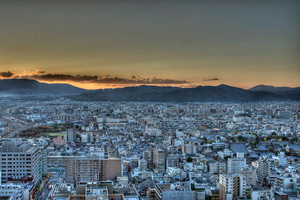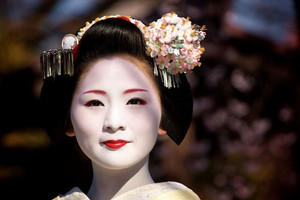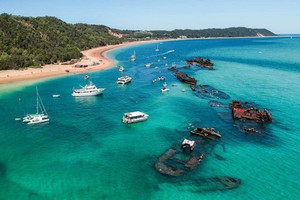
As a heat haze rises off the asphalt roads, businessmen in designer suits walk and talk with mobile phones pressed against their ears. In a nearby bar, a steel band strikes up and English expats talk cricket over a gin and tonic. The Cayman Islands is distinctly Caribbean on the surface, yet very colonial at its heart, and it is fast gaining a deserved reputation as a genteel island experience.
The Caymans
Made up of three islands - Grand Cayman, Little Cayman and Cayman Brac - the Cayman Islands is a British Crown colony which boasts the highest standard of living in the Caribbean, thanks to the influence of the offshore banking industry. Grand Cayman receives 95 percent of the tourist traffic, with Little Cayman and Cayman Brac often overlooked because of a lack of tourism facilities, although they do provide the perfect get-away-from-it-all experience. Until the 1970s the Cayman Islands were a sleepy British outpost in the western Caribbean, but in recent years the population has grown and the economy has taken off in a big way. Today banks in the Cayman Islands are regulated by the Cayman Islands Monetary Authority (CIMA) and banking is a major part of Cayman’s financial sector. At the end of March 2018 there were 147 banks, including six retail banks used by the locals for day-to-day financial matters. A testament to the worldwide recognition of the quality of Cayman’s financial industry is that over 40 of the world’s top 50 banks hold licences in Cayman.
Georgetown
It is the heart and soul of Cayman, as well as the capital, and where most of the wheeling and dealing takes place, but it’s also a pleasant town with classic colonial architecture. But the Cayman Islands is more than just a money centre. Some of the best examples of Caymanian architecture can be found at the northern end of Seven Mile Beach on Boggy Sand Road. Set back from the beach behind more contemporary and larger beach villas, they have expansive verandahs with gingerbread trim and splashes of colour thanks to bougainvillea, and gardens decorated with polished conch shells dotted with palm and breadfruit trees. And while it is a relatively flat island which perhaps lacks the stunning landscapes of fellow Caribbean islands such as Jamaica and Martinique, Cayman does feature classic white sand beaches and fantastic diving and snorkelling. Here the fish seem bigger and brighter, and the water crystal clear and warm. Most visitors head for the resort areas around Seven Mile Beach on Grand Cayman. It's a dazzling stretch of palm fringed white sand surrounded by crystal clear aqua blue ocean. Even without snorkelling gear, it is possible to see colourful fish darting around in the water right up to the edge of the beach.
Stingray City
It’s no wonder Cayman has created a thriving diving industry to attract underwater enthusiasts as more than dozens of operators offer trips to around 200 different sites and on most days visibility easily reaches 30 metres and perhaps the most famous of the sites is Stingray City, described as “the best 12 foot dive in the world”. Situated on North Sound, this is an experience which is unique and allows divers and snorkellers to get up close and personal with stingrays. They actually rub their velvety bellies against your hands and feet. It’s their way of letting you know they’d love a piece of squid. In spite of bad press lately it’s perfectly safe as the ‘rays have become very tame and behave like pets after more than a decade of human interaction. The stingray feeding developed in the late 1980s, after local fishermen noticed an abundance of the creatures, which are scavengers by nature, cleaning up on leftovers thrown overboard.
Turtles And Butterflies
Another major attraction on Grand Cayman is the world’s only commercial turtle farm. About 40 per cent of the 8,000 hatchlings raised here each year are returned to the sea when they reach about a year old. In fact, since 1980, the Farm has released 29,000 turtles back into the sea to help replenish the wild population. The turtles are now protected and the Farm aims to provide an ideal breeding environment. Turtle numbers took a massive hit after Hurricane Ivan devastated Cayman in September 2004, and the Turtle Farm is working at rebuilding stocks of the majestic creature. Conservation is also a priority at Cayman’s Butterfly Farm which is a world away from the island’s five-star resorts and luxury cruise ships. Inside a meshed and landscaped enclosure, thousands of butterflies fly freely around among the plants and waterfalls. It pays to wear colourful clothing and perfume - the butterflies are attracted to colour and the sweet smell and often land on people. The best time to go is early in the morning when it is possible to watch the birth of a butterfly. It’s a serene encounter, and typical of the Cayman experience in which wildlife and nature are the star attractions.
- By:
- Ben Hall













